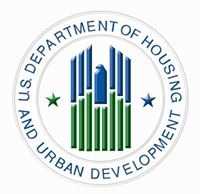New ULI Report, Housing in America: Integrating Housing, Health, and Resilience, Looks at the Link Between Strengthening Community Resilience and Building Healthy Places
SAN FRANCISCO – September 2, 2014 – (RealEstateRama) — A new report from the Urban Land Institute, Housing in America: Integrating Housing, Health, and Resilience in a Changing Environment, explores the connection between strengthening the resilience of housing and communities to severe weather and building for health and wellness.
Housing in America points to the need for greater emphasis on community building, including housing, that is more adaptable to changing environmental conditions, including more frequent extreme weather events, and which, as a result, is better equipped to protect the health and well-being of residents. “Continuing innovation in housing and community design practices, building standards, and infrastructure can help mitigate the growing risks presented by weather volatility and sea-level rise, while enhancing the livability and health of communities and strengthening their triple bottom line: social, environmental, and economic performance,” the report states.
Housing in America was released today at ULI’s “Building the Resilient City” conference in San Francisco, which is focusing on the connection between energy and resilience, the critical role of risk and insurance, lessons learned from communities that have faced challenges, and how risk and resilience impact real estate investment decisions.
The report lists five fundamentals that are key to development practices that improve both the health and resilience of communities:
- Develop Compact, Walkable and Mixed-Use Places – Places that are pedestrian friendly tend to encourage more social interaction and have strong connections between residents, which can aid the ability of individuals and communities to withstand and “bounce forward” from disaster. In addition, these places often have activity hubs that can be repurposed in times of disaster.
- Encourage Greater Equity – Encouraging greater equity in communities can help address the needs of particularly vulnerable residents, such as those with low incomes and low education levels, who often have difficulty obtaining recovery assistance and who are more susceptible to poor health outcomes.
- Invest in Social Capital – Developers of new communities can help set up social infrastructure through opportunities for people to meet with each other, including programming, physical activity opportunities, and connectivity to other parts of the city.
- Build Resource-Efficient and Durable Housing – To maximize its ability to mitigate the impacts of climate change and withstand future extreme weather events, housing must be designed to be resource-efficient and durable. Other benefits of “green” housing: reduced energy consumption and the improved health of occupants.
- Continuously Adapt for a Changing Environment – Resilient housing and communities must be able to not only withstand extreme weather events and the adverse impacts of climate change, but also be able to emerge from natural disasters stronger than they were prior to the events.
The report profiles the responses of three communities that were destroyed or threatened by natural disasters: Greensburg, Kansas, hit by a tornado in 2007; the Talmadge community within San Diego, Calif., which narrowly escaped a wildfire in 2003; and Cedar Rapids, Iowa, which was devastated by a flood in 2008. All three communities incorporated elements of the five fundamentals in their post-disaster resilience strategies. Following the tornado in Greensburg, the community engaged residents in shaping long-term recovery plan that included sustainable building and health and wellness amenities. Talmadge adopted a Community Wildfire Protection Plan after wildfires destroyed the area next to the community; the plan fosters a high degree of social interaction among residents working together to protect their homes and common space; and it led to the use of more durable construction materials, such as fire-resistant shingles. In Cedar Rapids, a community engagement process in place prior to the flood led to a post-disaster visioning process that called for more compact, walkable, mixed-use development out of flood-prone areas.
Key takeaways from the report include:
- Climate change and health are inextricably linked to each other
- Communities that prepare for the impacts of climate change can become more resilient as they rebuild
- Resilience requires a place-based, people-based and housing-based approach
- Compact, walkable mixed-use places are healthier and more resilient
- Equity is an integral consideration regarding health and resilience
- Social capital is invaluable in the face of climate disasters, and can be built through ongoing investments of time and energy among community leaders and residents
- Durable, resource-efficient housing is an essential component of healthy and resilient communities
- A changing environment requires constant adaptation and planning for the future
“Climate change provides a lens through which to re-envision (development) practices,” the report says. “By carefully considering land use patterns, meeting the needs of vulnerable populations, and taking other actions, we can help ensure that all communities are healthy, robust and thriving in the decades to come.”
Housing in America was prepared jointly by the ULI Terwilliger Center for Housing and ULI’s Building Healthy Places initiative. The ULI Terwilliger Center for Housing engages in a multifaceted program of work that furthers the development of mixed-income, mixed-use communities with a full spectrum of affordable housing. The Building Healthy Places initiative is leveraging the power of ULI’s global networks to shape projects and places in ways that improve the health of people and communities.
NOTE TO EDITORS AND REPORTERS: Copies of the new Housing in America report are now available for download.
About the Urban Land Institute
The Urban Land Institute (www.uli.org) is a nonprofit education and research institute supported by its members. Its mission is to provide leadership in the responsible use of land and in creating and sustaining thriving communities worldwide. Established in 1936, the Institute has more than 32,000 members worldwide representing all aspects of land use and development disciplines.
Contact Trish Riggs at 202-624-7086
















